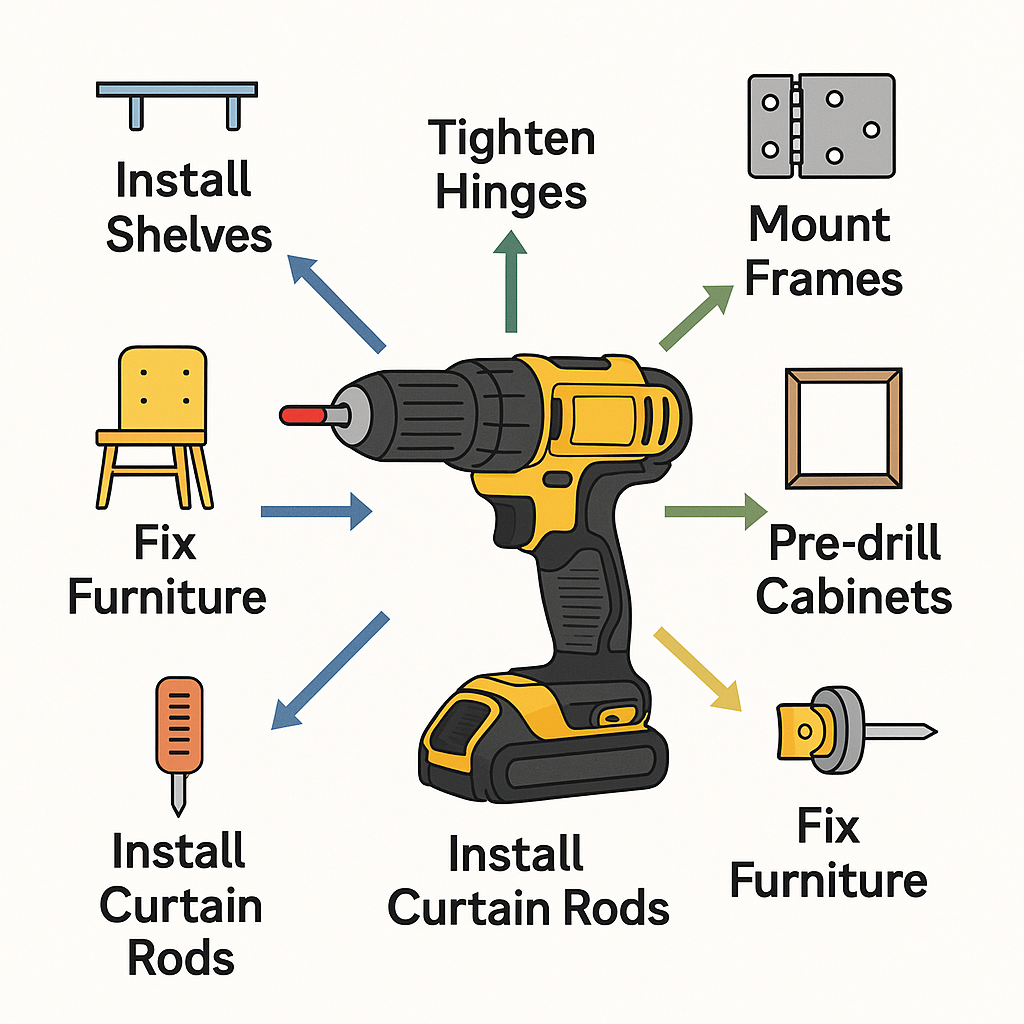One-Minute Quick Look
An impact drill is basically a beefed-up drill with light vibration. A hammer drill has an internal piston that delivers real hammer blows. Remember the simple rule: thin walls, wood, or metal use an impact drill; solid concrete walls or floors use a hammer drill.
| Item | Impact Drill | Hammer Drill |
|---|---|---|
| How it works | Gear plates rub to create light vibration | Piston drives real hammering force |
| Best for | Brick, lightweight block, wood, metal | Concrete walls, slabs, heavy anchors |
| Bit interface | 3-jaw chuck holding twist bits | SDS shank with quick insert |
| Typical weight | 1.5–2.5 kg | 2.5–5 kg |
When to Choose Each Tool
Start by checking the wall material. Hollow block or drywall for small hangings? Pick the impact drill. Mounting an AC bracket on structural concrete? Grab a hammer drill or rent one.
- Impact drill: everyday repairs, drilling metal, enlarging screw holes, plastic anchors up to 10mm.
- Hammer drill: concrete walls, floor holes, anchors above 12mm, deep holes in tough material.
Three Easy Purchase Steps
- Check the wall: knock on it or use a stud finder. Hollow sound = light wall; dull sound = concrete.
- Decide the hole size: match the anchor or pipe diameter so you know what bit you need.
- Set the budget: plan $40–80 for a starter impact drill kit; if concrete is common, spend $100–170 on an SDS-Plus hammer drill.
Text-based flow chart:
Working on brick / wood? → Impact drill
Working on concrete / floor? → Hammer drill
Hole size above 12 mm? → Hammer drill
Need to drill metal or screw holes too? → Impact drill + twist bits
Power & Setup Tips
You do not need the biggest motor. Aim for gear that matches the job:
- Impact drills 500–750W: compact and light for home tasks. Look for variable speed and an auxiliary handle.
- Hammer drills 700–900W: mainstream SDS-Plus with 2–3J impact energy covers most home or light jobsite work.
- Helpful accessories: masonry bit set, dust catcher, assorted anchors, safety glasses, hearing protection.
If you only need a hammer drill occasionally, renting or borrowing is totally fine—keep an impact drill in your toolbox for everything else.



